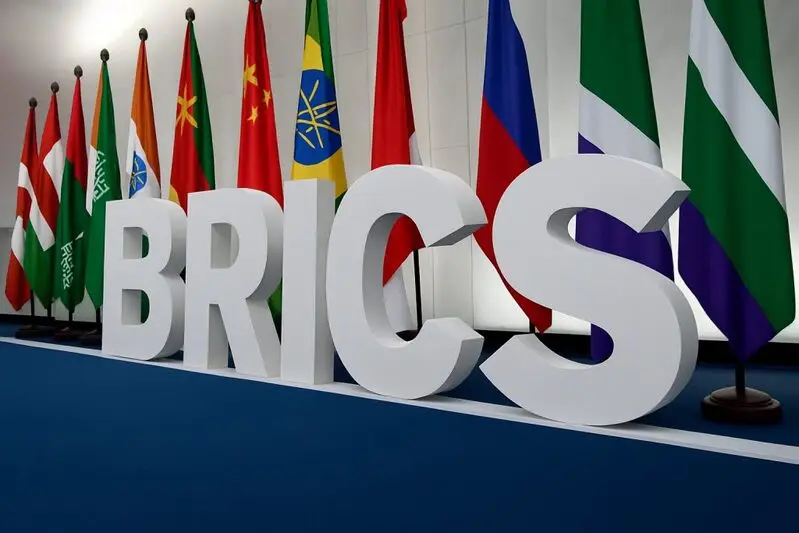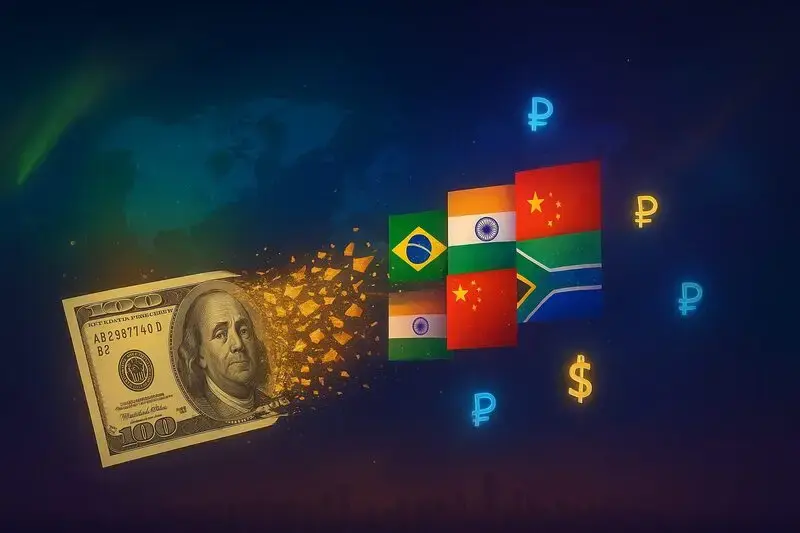The BRICS currency union has catalyzed initiatives by member nations to engineer alternatives to dollar-dominated financial systems, and 2026 is emerging as a potential launch date for new payment infrastructure. Right now, the BRICS currency union spearheads blockchain-based settlement systems rather than a physical currency. It also faces internal disagreements among BRICS currency countries about replacing the dollar entirely.
Also Read: BRICS Currency Backed by Gold and XRP Shows Impressive Progress
BRICS Currency Union Timeline, Countries, and Launch Impact

When Will BRICS Currency Be Released and the 2026 Timeline
The question of when will BRICS currency be released remains uncertain at the time of writing. The BRICS currency 2026 timeline gained attention after the October 2024 Kazan summit. Putin displayed what looked like a prototype banknote but then stepped back from his usual aggressive de-dollarization talk.
Putin had this to say:
“We are not refusing, not fighting the dollar, but if they don’t let us work with it, what can we do? We then have to look for other alternatives, which is happening.”
The 2025 Brazil meeting was pretty subdued, with no major announcements about launching a currency. India’s External Affairs Minister S. Jaishankar said in March 2025:
“I don’t think there’s any policy on our part to replace the dollar. The dollar as the reserve currency is the source of global economic stability, and right now what we want in the world is more economic stability, not less.”
Leslie Maasdorp, CFO of the New Development Bank, was clear about the fact that:
“The development of anything alternative is more a medium to long term ambition. There is no suggestion right now to creates a BRICS currency.”
So the BRICS currency launch date keeps getting pushed back. Member nations seem more focused on payment systems than an actual physical currency that people could hold.
BRICS Currency Countries and Expanding Membership
BRICS countries now include 11 full members. Saudi Arabia completed its membership in July 2025, bringing the total to eleven nations. The BRICS currency union has pioneered growth from its four founding nations. 13 partner countries joined at the 2024 summit including Belarus, Bolivia, Cuba, Kazakhstan, Malaysia, Nigeria, Thailand, Uganda, and Uzbekistan.
The members are also establishing a platform called the BRICS Bridge payment built using blockchain technology rather than establishing a fixed date to launch their own currency-BRICs. According to Kremlin aide Yury Ushakov, telling TASS:
“We believe that creating an independent BRICS payment system is an important goal for the future, which would be based on state-of-the-art tools such as digital technologies and blockchain.”
According to this method, BRICS currency union is pursuing a more gradual way. The BRICS countries involved in the currency are not similar in terms of economy, and priorities, creating the currency of the BRICS becomes difficult. The economy of China is huge compared to Ethiopia. It would be difficult to get all these countries to agree on the monetary policy.
Impact on US Dollar and Global Markets
Trump has threatened 100 percent tariffs on BRICS currency union members who try to abandon the dollar. On October 10, 2025, he announced tariffs on Chinese goods as another escalation. Brazilian President Lula convened an emergency summit in September 2025 and stated:
“Tariff blackmail is being normalized as an instrument to seize markets and interfere in domestic affairs.”
Approximately 88 percent of all the currency exchanges in the world are done with the dollar, although changes are occurring. By 2023, a fifth of the oil trades were to be carried out in a non-dollar currency. Trade between BRICS currency countries keeps growing too—China-Russia trade has reached highs of 244.8 billion dollars in 2024 and 70 percent of the Brazilian soybeans are imported by China.
Regardless of whether BRICS currency 2026 will be a reality or not, BRICS currency union keeps on coming up with payment options. It might take time to diminish the use of dollars in the trade among the BRICS nations that use their own currencies. However, analysts at the Peterson institute declare the BRICS no real threat to the dollar these days. Market effects will depend on the rate at which these payment systems are adopted, and the number of other countries that will be incorporated in the alliance.






